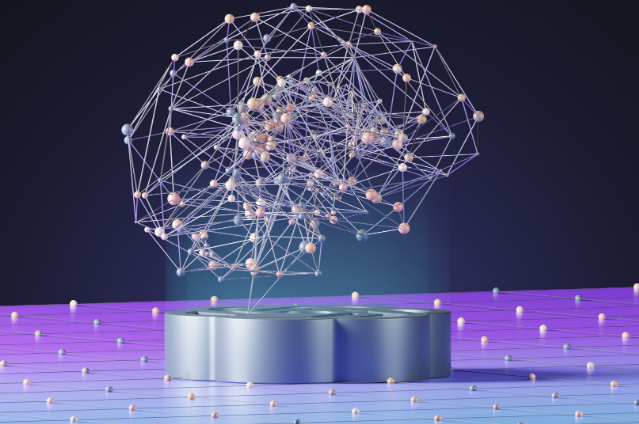
In the ever-evolving landscape of blockchain technology, speed, and efficiency have become the holy grail for both developers and users. Enter the Telegram Open Network (TON), a blockchain platform that has made waves with its claim to be the fastest blockchain network. In this article, we dive into the key features and technologies that drive TON to breakneck speeds and set it apart from the competitive blockchain world.
Consensus architecture and mechanism:
At the core of TON's speed is its innovative architecture and consensus mechanism. TON uses a unique combination of sharding and the Byzantine Fault Tolerant (BFT) consensus algorithm. Sharding involves dividing the network into smaller, more manageable segments called shards, allowing transactions to be processed in parallel. This approach drastically reduces the time it takes to verify and confirm transactions, allowing TON to handle high throughput.
The BFT consensus mechanism ensures the security and reliability of the network by allowing nodes to reach consensus even in the presence of malicious actors. This combination of sharding and BFT sets TON apart by providing speed and robust security.
Paradigm of infinite division:
One of the pioneering concepts of TON is the Infinite Sharding Paradigm. Traditional sharding solutions face limitations when it comes to network expansion, often hitting a scalability bottleneck. TON's Infinite Sharding Paradigm aims to overcome this problem by allowing the network to dynamically adjust the number of shards based on demand. This flexibility ensures that TON can scale horizontally without compromising speed, making it a frontrunner in the scalability race.
TON Virtual Machine (TVM):
To achieve unrivaled speed, TON introduced its own virtual machine called TON Virtual Machine (TVM). TVM is designed to run smart contracts with lightning speed and efficiency. By optimizing the execution environment for smart contracts, TON minimizes the time required to process and verify transactions. This plays a key role in increasing the overall speed of the network, making it the preferred choice for decentralized applications (DApps) that require fast and seamless transactions.
Cryptocurrency TON Crystal:
The native cryptocurrency of the TON network is TON Crystal (TON). TON Crystal plays a key role in facilitating fast and cost-effective transactions within the network. TON Crystal's design is in line with TON's overall goal of providing users and developers with seamless and fast transactions.
Smart Contracts and Decentralized Applications (DApps):
TON's focus on speed extends to supporting smart contracts and decentralized applications. The platform provides developers with a robust environment for deploying high-performance smart contracts, enabling the creation of DApps that can handle large numbers of transactions without compromising speed or security. This makes TON an attractive choice for projects requiring fast and efficient implementation of smart contracts.
User-friendly interfaces:
In addition to its technological prowess, TON also places great emphasis on user experience. The network provides user-friendly interfaces and development tools that simplify the process of creating and interacting with decentralized applications. This commitment to usability adds to TON's appeal, attracting a diverse spectrum of users and developers looking for both speed and accessibility.
In the ever-evolving landscape of blockchain technology, speed, and efficiency have become the holy grail for both developers and users. Enter the Telegram Open Network (TON), a blockchain platform that has made waves with its claim to be the fastest blockchain network. In this article, we dive into the key features and technologies that drive TON to breakneck speeds and set it apart from the competitive blockchain world.
Instant Hypercube Routing:
Routing is a critical aspect of any blockchain network and determines how efficiently information is transmitted across the network. TON uses Instant Hypercube Routing, a sophisticated routing mechanism that significantly reduces latency. This method ensures that transactions are transmitted across the network with minimal delay, contributing to TON's reputation as the fastest blockchain network.
The TON testnet was run on 256 validators. Under heavy load, the test network split into 512 fragments, allowing the network to reach 104,715 TPS. The unprecedented success of this test has proven to be an infrastructure layer for the web3 ecosystem in Telegram and large enterprises seeking to create blockchain-based products, as well as a global decentralized network ready to overcome traditional financial tracks. TON takes the concept of sharding to the extreme by using an infinite sharding paradigm to create a blockchain of blockchains. TON is capable of splitting into 2^30 work chains, each of which can then be split into up to 2^60 fragments. In September 2023, the TON Foundation also announced cooperation with Telegram and the Tencent cloud.
And the most amazing thing is that despite the record results, the speed achieved is not the limit of what TON is capable of with enough validators.
About TON Foundation- Open Network Foundation is a non-profit organization founded in Switzerland in 2023. The foundation is 100% funded by the community and supports the initiative in line with the mission of the open network.
Conclusion:
In the rapidly developing world of blockchain technology, TON is proving to be a pioneer and boasts the title of the fastest blockchain network. Its innovative combination of sharding, fault-tolerant Byzantine consensus, Infinite Sharding Paradigm, TON virtual machine, Instant Hypercube Routing, and user-friendly interfaces together contribute to TON's groundbreaking speed. As the blockchain space continues to evolve, TON's commitment to speed, scalability, and security positions it as a formidable player with the potential to shape the future of decentralized applications and blockchain ecosystems.
